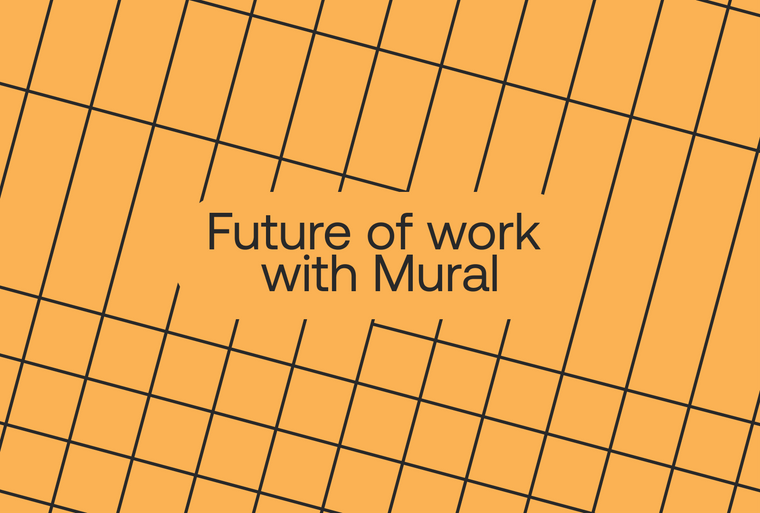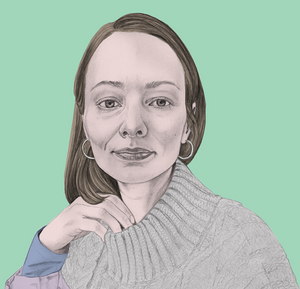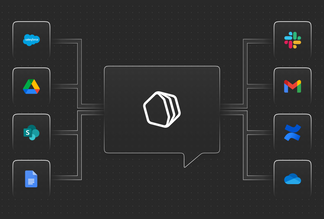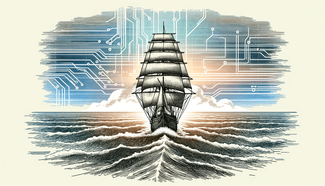
Jim Kalbach on the future of team collaboration
Welcome to the first in a series of interviews around the Future of Work by Qatalog. We’ve started this program as a way to engage and learn from global business leaders who are championing new ways of work. We’re kicking things off with Jim Kalbach, MURAL’s Chief Evangelist. Jim’s commitment to “leveraging collective imagination” has inspired us, and we’re pleased to share our recent interview with him.
Qatalog: The “future of work” topic is receiving a lot of attention. What trends are you following most closely?
Jim: We’re most interested in the future of team collaboration and new ways of working. We believe that how teams work together is a critical business factor and competitive advantage. The trends we’re watching include things like:
- Facilitation. We believe facilitation skills will become more of a priority as a result of increased distributed teams. You don’t have to be a trained Facilitator (with a capital F) to facilitate: anyone leading a conversation can benefit from knowing how to drive towards the desired outcomes.
- Visual methods. Visualizing work not only builds alignment and increases engagement, it also accelerates problem solving. Frameworks like the business model canvas show that visualizations aren’t only for creative disciplines.
- Remote work. Of course, here at MURAL we’re committed to continue to understand the remote condition. We learned a lot in 2020, but we’re really just getting started in general.
Q: “2020 was about emergency distributed work, 2021 is about optimization for distributed work.” Do you agree?
J: Yes, I do agree: remote collaboration took off in 2020 out of necessity. Moving forward we’ll likely see two things. First, the optimization of distributed work, as you say, which includes not only new tools but behaviors. That’s really the frontier we need to work on collectively. How do we better engage remote teams? How do we bring clients into creative conversations in a distributed setting? The list of questions goes on, and we’re still learning as we go.
But also I think we’ll start to see a shift towards partially distributed collaboration as some people start going back to the office post-vaccine, perhaps in the second half of the year. The challenge of hybrid meetings—where half of the team is in-person together and the other half is distributed—is achieving equality of interaction. It’s easier for in-person conversations to out-pace those with folks dialed in and to interact with materials in the room.
I believe that what the working world learned about remote collaboration in 2020 will stick. That is, we’ll continue to think and work digitally even as we slowly head back to our offices later in 2021.
Q: What kind of organizational cultures do you think best serve those adapting to distributed work?
J: Culture does play a big role, and the ones that adapt best already have the necessary qualities to adapt to effective distributed work. For example, we’ve found some of these cultural aspects to be most important:
- Encouraging engagement. Distributed work is best when people can participate and stay interactive with the group. Otherwise, it’s far too easy to drift off and multi-task on something else and not contribute. Work cultures that seek engagement from everyone in the group thrive better in distributed contexts.
- Inclusion of diverse perspectives. Distributed teams can be more inclusive in the range of people included because there are lower barriers of distances and location. Cultures that are open to diverse opinions—even if they are outlier opinions—not only collaborate better but are also better prepared to innovate. Having a diverse mindset helps to adapt to remote collaboration and produce better results.
- Creating psychological safety. A certain flexibility is required with distributed work and openness to experimentation. Failing needs to be OK: If you get it wrong, that’s OK—you’ll learn from your mistakes and move on. People have to feel safe about contributing creative ideas, even if they end up failing.
Q: What's the biggest challenge for you and your team at work these days? And how do you work on overcoming it?
J: As a company, MURAL has changed dramatically in the last year. Of course, we’ve been advocating for improving remote work for years and we believe we have a solution that can help. When companies found themselves “suddenly remote” because of the pandemic, we were there to help, e.g., with content, guidance, extended offers, etc.
But there’s no doubt that our business grew at the same time. We’ve tripled the size of the company, and we received Series B funding. Although we’ve always been a remote-first company—with global teams on four continents—any organization would struggle to scale under this rapid growth.
So our challenge was less around how we work remotely than it was how do we scale as a remote company to meet market demand.
Q: It's believed by some within the creative industry that there's no real substitute for face-to-face collaboration. Do you agree with that? How are you addressing this idea at MURAL?
J: Yes, I agree with that sentiment on one level. In fact, one of our guidelines for good remote collaboration is to “meet in person.” If you know your colleagues personally, remote collaboration is a lot easier.
But you could also say there is no substitute for distributed collaboration as well. So I find it problematic viewing face-to-face collaboration as all or nothing, black and white. The reality of our modern work environments should best be seen as a continuum of modes—from completely in-person collaboration to hyper-distributed teams. You have to be able to function across a range of modes and settings, and be able to move between them as well.
At MURAL we’re committed to developing best practices for digital collaboration, whether in-person or distributed. For instance, here’s a short post I wrote a while back summarizing some techniques for moving between modes of collaboration. And we continue to learn new techniques from our community. As work moves back to the office post-pandemic, we’ll be watching closely how customers and partners think and work digitally, and how the line between in-person and remote blurs.
We’ve also built capabilities into our platform to make the transition easier. MURAL Scan is still in beta, but will be released soon. With it, you can scan a wall of physical sticky notes and drawings, and digitize them to a mural canvas instantly.
Q: You've been running innovation and design workshops for a while now. What are your strategies for facilitating successful collaboration?
J: There are lots of details to consider, many of which we captured in our book, Facilitating Remote Workshops. But at a high level, there are two overarching principles that guide my style of remote facilitation.
The first is to design an experience for the workshop in advance. When I give in-person workshops, I can improvise some of it on the spot. It’s also possible to observe progress in a room and determine if a person or group is lost. In remote settings, that’s harder to do.
Laying out your workshop visually in MURAL forces you to break things down and get more granularity. Instead of 30-minute chunks of time, you want to think in 10-minute or even 5-minute chunks. And you want to be much more explicit about your instructions: don’t leave anything to chance. This requires more upfront planning and preparation, but you gain that time back afterward with reduced consolidation and transcription time.
The second thing to consider is how to maintain engagement. You have to get creative on how you can involve others and get their participation with the tools available to you. I find using a range of inputs and planning for frequent calls for participation increases engagement. For instance, you might share your audio and video with a conferencing tool like Zoom. But also consider how you can use the chat function for quick polls and inputs. Or use an online polling tool like Menti for live input. Adding interaction in a MURAL canvas increases the engagement even more.
When you put it all together—a designed experience with frequent engagement—you can not only keep a group’s attention for four or more hours, you also get better results.
Q: Tell us more about the Jobs To Be Done toolkit. We're especially interested in how it could be used to advocate for change.
J: The JTBD Toolkit is a follow-up project to my book, The JTBD Playbook. The two complement each other. The book covers a lot of ground work and points to other resources to learn more. It’s really a hub of resources to get started with. The Toolkit focuses on deepening knowledge and skills around core concepts of JTBD, so it’s a lot more focused. We also offer live workshops each month through the Toolkit. Combined with our monthly webinar, it’s really a place for ongoing conversations and learning around the topic of JTBD.
For me, Jobs To Be Done is a way of seeing the people you serve independent of technology or solutions, including your own. This gives you a new and unique perspective on your business and points to hidden opportunities. The techniques of JTBD guide you in finding new possibilities through a structured language of analysis and techniques for modeling human behavior.
Q: And finally, tell us what work-life balance means to you today?
J: Great question. Not sure if anyone really knows the answer to that, do they? But one thing I’m finding more and more is people seeking purposeful, meaningful work. Employers pay you in money, which is a renewable resource for them. In return, you give them your time, which is a finite resource you never get back. If you’re going to spend ⅓ of your day working on something, it should be meaningful and rewarding to you.
So, yes: things like flex-time and the option to work from home may contribute to better work-life balance. For sure, we want colleagues at MURAL to have that control over their time and work. But at a deeper level, working for something you really care about brings work-life balance as well.



